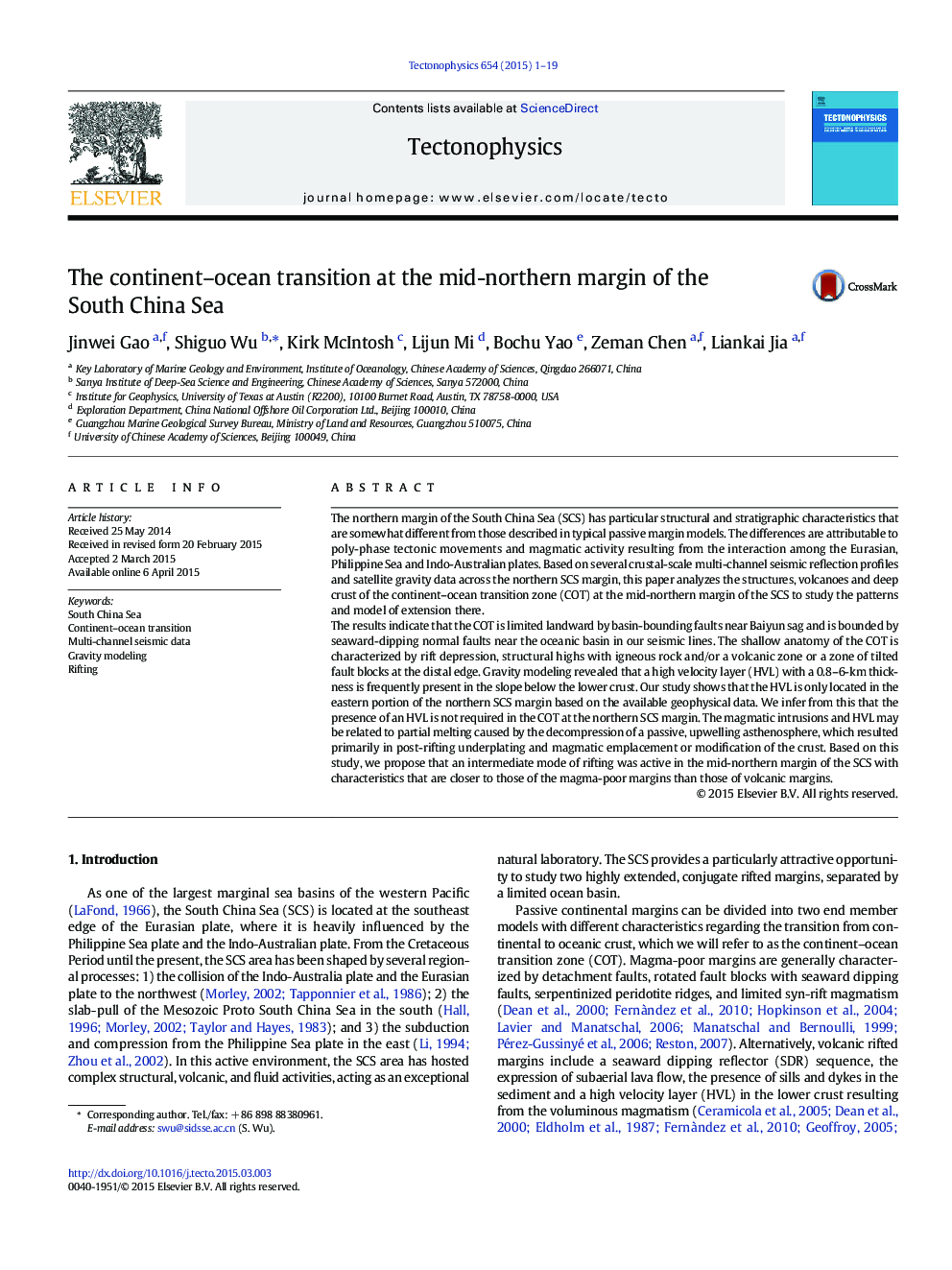| کد مقاله | کد نشریه | سال انتشار | مقاله انگلیسی | نسخه تمام متن |
|---|---|---|---|---|
| 6433648 | 1636741 | 2015 | 19 صفحه PDF | دانلود رایگان |
- The COT is characterized by rift depressions, structural high, and/or volcanic zone, and/or tilted fault blocks.
- The high velocity layer (HVL) is thickest in the Dongsha uplift and thins to the Manila Trench and Baiyun sag.
- The HVL may result from post-rifting underplating and magmatic emplacement or modification of the crust.
- An intermediate rifting mode is proposed to explain the mid-northern margin of the South China Sea.
The northern margin of the South China Sea (SCS) has particular structural and stratigraphic characteristics that are somewhat different from those described in typical passive margin models. The differences are attributable to poly-phase tectonic movements and magmatic activity resulting from the interaction among the Eurasian, Philippine Sea and Indo-Australian plates. Based on several crustal-scale multi-channel seismic reflection profiles and satellite gravity data across the northern SCS margin, this paper analyzes the structures, volcanoes and deep crust of the continent-ocean transition zone (COT) at the mid-northern margin of the SCS to study the patterns and model of extension there.The results indicate that the COT is limited landward by basin-bounding faults near Baiyun sag and is bounded by seaward-dipping normal faults near the oceanic basin in our seismic lines. The shallow anatomy of the COT is characterized by rift depression, structural highs with igneous rock and/or a volcanic zone or a zone of tilted fault blocks at the distal edge. Gravity modeling revealed that a high velocity layer (HVL) with a 0.8-6-km thickness is frequently present in the slope below the lower crust. Our study shows that the HVL is only located in the eastern portion of the northern SCS margin based on the available geophysical data. We infer from this that the presence of an HVL is not required in the COT at the northern SCS margin. The magmatic intrusions and HVL may be related to partial melting caused by the decompression of a passive, upwelling asthenosphere, which resulted primarily in post-rifting underplating and magmatic emplacement or modification of the crust. Based on this study, we propose that an intermediate mode of rifting was active in the mid-northern margin of the SCS with characteristics that are closer to those of the magma-poor margins than those of volcanic margins.
Journal: Tectonophysics - Volume 654, 18 July 2015, Pages 1-19
